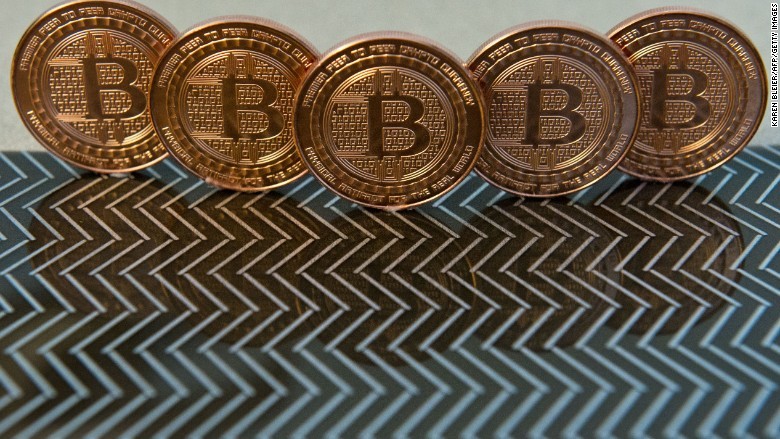The Skinny on Bitcoin Futures. Tulips Anyone?

Bitcoin futures contracts are set to begin trading before the end of the year and perhaps as soon as mid-December. The most likely scenario involves two bitcoin futures symbols and markets. Which should you trade, asks Carley Garner, senior strategist for DeCarleyTrading.
It is impossible to scroll through social media feeds or newspapers without being exposed to the mania of bitcoin (BTC). It is a new and exciting “asset class” (I am using that term lightly because the asset is virtual perception) that has exploded in value creating a massive amount of a paper wealth to those who have participated thus far.
Meanwhile, Tuesday bitcoin surpassed $ 10,000 for the first time ever, as TheStreet.comreported and flirted over $ 11,000 Wednesday.
However, I cannot emphasize enough the common mantra, past results are not indicative of future results.
As has been the case with all other market bubbles since the beginning of time, they don’t last forever and there are likely to be some tears shed as prices normalize. Today’s bitcoin bubble is larger than any other since the infamous Dutch tulip bulb frenzy. Nevertheless, bitcoin futures are on the way which will open the door to a centralized and transparent venue for speculation.
To be honest, I am not interested in trading bitcoin at this time (because I revert to Warren Buffet’s advice on bubbles, suggesting it isn’t as important to make money in a bubble than it is not to “lose your shirt”).
At some point in the future, the cryptocurrency markets will likely be a more sophisticated market worth taking a look at. In the meantime, as a Las Vegas local, I never turn down a free show.
What is bitcoin?
This is a bit of a loaded question, but for our purposes, we will keep it simple. Bitcoin is an electronic central-bank-free currency created in 2009.
There is no middleman to transactions, no fees, and those buying and selling need not provide names or personal details. As you can imagine, because of the anonymity, the currency is often used for illegal transactions such as drug and weapon sales, and it is a place for money laundering. However, proponents also point out it is a great way to break free from the handcuffs of central bankers. And legitimate businesses are slowly beginning to accept bitcoin to enable consumers to purchase items such as web hosting services, pizza, and even real estate.
We could spend a lot of time arguing over the legitimacy and lasting power of cryptocurrencies, but that isn’t the premise of this article. We simply want to introduce the idea of soon-to-be trading access via the futures markets.
Two types of bitcoin futures
There are two different bitcoin futures proposed and being reviewed by regulators; the Chicago Mercantile Exchange would like to list a bitcoin futures contract using symbol BTC and the Chicago Board of Trade would like to list a similar futures contract using XBT.
If approved, these contracts are set to begin trading before the end of the year and perhaps as soon as mid-December. It is hard to imagine regulators approving one and not the other, so the most likely scenario involves two bitcoin futures symbols and markets. In my opinion, this is unfortunate because it divides liquidity between two different marketplaces and creates challenges to brokers. For instance, not all futures brokers offer CBOE products on their trading platforms and not all stockbrokers offer CME Group futures on their platforms. Further, those using brokers with access to both might experience some confusion on which is most advantageous to trade.
Because both of the proposed bitcoin futures are being reviewed by the CFTC (Commodity Futures Trading Commission) the exact margin requirements and contract specifications have yet to be set in stone. Yet, we have a pretty good idea of what they might look at should they be approved. See the CFTC Primer on Virtual Currencies.
The primary difference between the two bitcoin futures is contract size.
The CME Group would like to list a futures contract for trading that represents five bitcoins; assuming a bitcoin value of $ 10,000 this equates to a futures contract value of $ 50,000.
The CBOE version would be a much smaller contract representing a single bitcoin; similarly, if bitcoin was valued at $ 10,000 the futures contract would also be valued as such. In short, the CME contract will offer well-margined traders economies of scale but smaller traders will find the CBOE version to be less risky and easier to stomach.
Both versions of the contract will be cash settled. This means traders who hold a long futures contract into expiration won’t be delivered actual bitcoin. Instead, the exchange will determine the cash market price of bitcoin at the futures contract expiration and cash adjust traders’ accounts accordingly.
As a broker who has seen cash settlements pick the pockets of speculators for years, I strongly recommend offsetting positions prior to expiration to avoid unnecessary slippage in pricing.
The trading hours will be similar, but the CBOE version will have slightly extended after-hours trading time. While this might be convenient from time-to-time, under normal circumstances having 23.75 hours per day of access vs. 23 hours probably isn’t a game changer.
On the other hand, the CBOE will offer limited order types while the CME will offer traders more convenient order placement. For example, the CBOE will not accept market orders and will not accept stop orders, but stop/limit orders will be allowed. (Stop/limit orders are modified stop orders that name the amount of slippage a trader is willing to accept in the fill price.)
The exact margin requirement is expected to be 20% to 30% of the contract value. Thus, assuming bitcoin is valued at $ 10,000, the margin to hold a futures contract overnight would be $ 2,000 to $ 3,000 for the CBOE version but the CME version which represents 5 bitcoins could be much higher at $ 10,000 to $ 15,000.
On a side note, some argue that the CME Group and the CBOE listing bitcoin futures contracts provide proof to the long-term viability of cryptocurrency. Yet, we would like to point out exchanges have listed multiple products over the years that didn’t necessarily become a legitimate marketplace (ie. weather futures, real estate futures, ethanol futures, single stock futures, etc.).
Futures exchanges are in the business of creating products that generate trading activity, and therefore transaction fees; they aren’t in the business of judging which asset classes have long-term viability (although they prefer to choose such assets to create derivative markets).
In short, the exchanges can’t see into the future any better than we can but, for them, it is worth taking a shot in the dark to see how things pan out.
Which should you trade?
In my opinion, the answer to that question is neither. Yet, I would have said the same months ago and those who opted to throw caution and logic to the wind have likely fared very well. Still, bubble speculation is a dangerous game; where there are claims of riches to be made there will always be a trail of despair in its wake. Until bitcoin can be used for everyday legitimate transactions or to pay taxes, I’ll continue to think of it in the same way I think of buying credits for online games such as Candy Crush or Farmville; money paid into the system by those with blurry perceptions of value but it rarely makes its way out.
There is a substantial risk of loss in trading commodity futures, options, ETFs. Seasonal tendencies are already priced into market values.
Subscribe to e-newsletters by Carley Garner at www.DeCarleyTrading.com.









